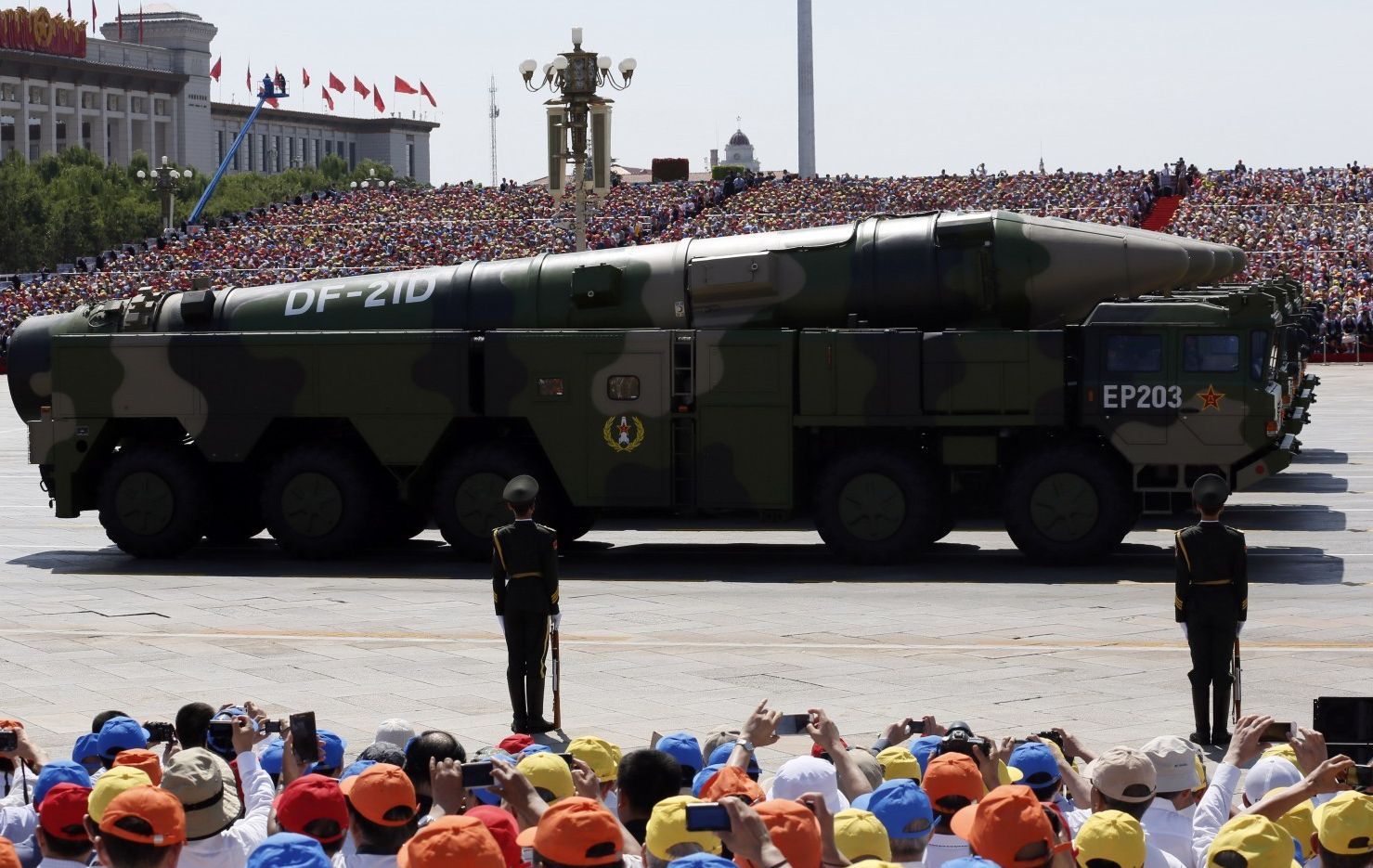China will raise its defense spending by 7.6 percent this year, a budget report to the country’s Communist-controlled parliament showed on Saturday, a smaller increase than past years as it seeks a more efficient military.
It was the “lowest defense budget increase in six years”, the official news agency Xinhua said, adding it came “in the wake of rising economic headwinds and last year’s massive drawdown of service people”.
The comment was a reference to cut of 300,000 personnel in the People’s Liberation Army (PLA), still the world’s largest standing military, announced by President Xi Jinping at a giant military parade in Beijing last September to commemorate the 70th anniversary of Japan’s World War II defeat.
China’s total declared spending of 954 billion ($146 billion) remains far below the $580.3 billion requested by the Pentagon for this fiscal year.
Beijing is looking to create a more effective fighting force and has increased its military heft and asserted its territorial claims in the South China Sea, raising tensions with its neighbors and with Washington.
The country will seek to “strengthen the military in all respects so that it is more revolutionary, modern, and standardized,” the budget report said.
At the start of the year, the Asian giant unveiled a revamped military structure, establishing a new army general command and a Rocket Force to oversee its strategic missiles.
Chinese Premier Li Keqiang told the opening session of the parliament: “We will strengthen in a coordinated way military preparedness on all fronts and for all scenarios, and work meticulously to ensure combat readiness and border, coastal, and air defense control.
“We should strive to forge an ever closer bond between the military and the government.”
‘Sampans and Telescopes’
Beijing has built up artificial islands in the disputed South China Sea — through which a third of the world’s oil passes, and which it claims almost in its entirety.
Several other littoral states have competing claims, as does Taiwan.
Satellite pictures show what US analysts say are deployments of surface to air missiles and facilities with military uses, such as runways and radar.
At the same time, Beijing is looking to increase naval strength and reach, and officials confirmed in December that its second aircraft carrier — the first to be entirely domestically designed and built — was under construction.
In 2015, the defense budget was increased by 10.1 percent.
The official Xinhua news agency carried a commentary Saturday defending China’s spending, saying China could not fend off US and other countries’ intrusions into its waters and airspace with only “sampans and telescopes”.
On a per capita basis, it said, Beijing’s defense spending was only six percent of Washington’s, and criticism of its budget was a “calculated ballyhoo directed by the West to defame China and to portray China as a simmering threat”.
“By throwing bricks from the outside, the West is actually meddling in China’s internal affairs,” it added.
Many analysts believe that China’s actual military spending is significantly higher than officially publicized, a position echoed by James Char of the S. Rajaratnam School of International Studies in Singapore.
“Xi Jinping will be determined to increase the military capabilities of the PLA in spite of the slowing growth of China’s economy,” he told AFP.










